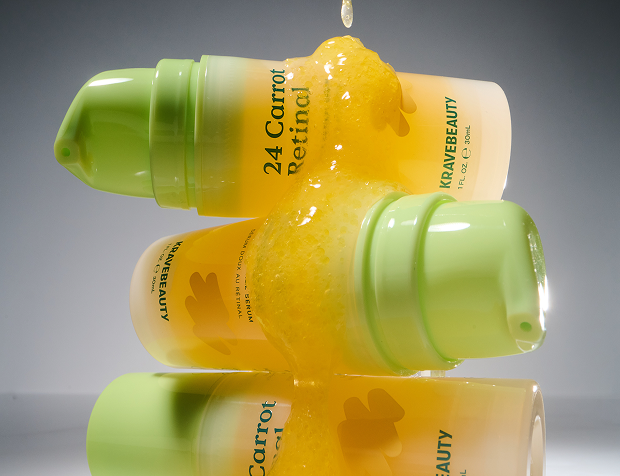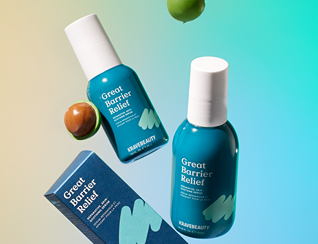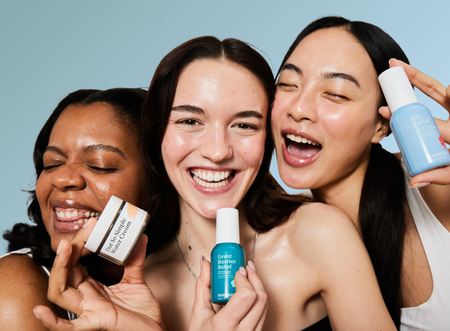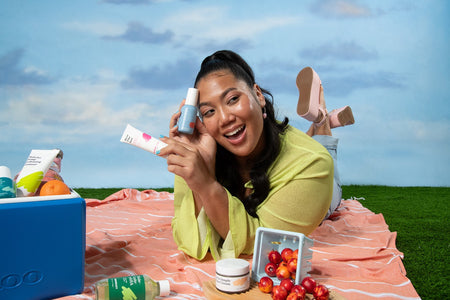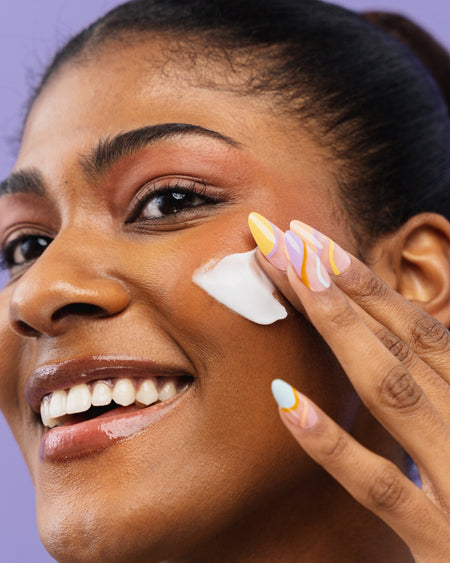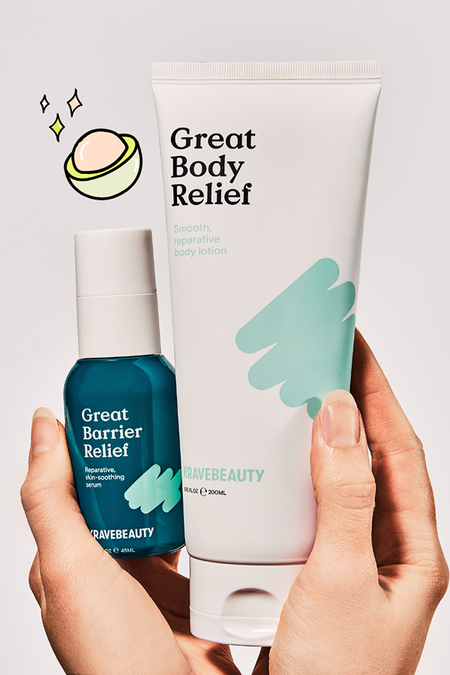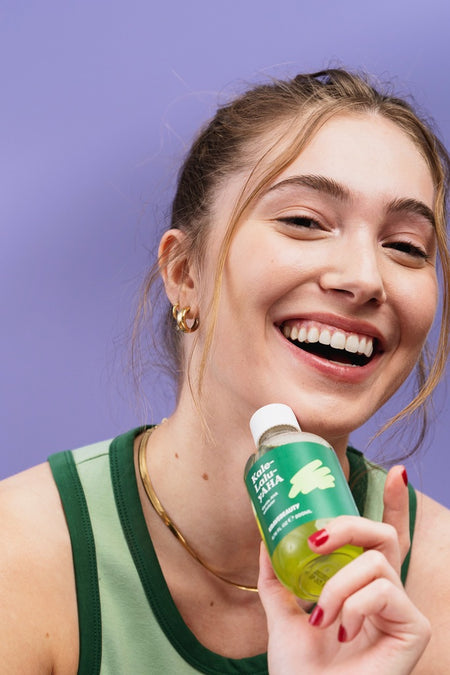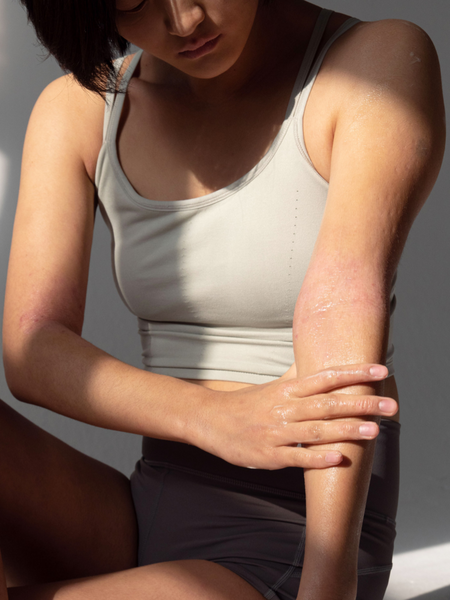10 Skincare Myths Debunked

Image is courtesy of @laviedefawn
With so much information floating around the skincare world, it’s almost impossible to differentiate fact from fiction. That’s why we’re here to set the record straight and bust those myths. Keep on reading for the truth behind the most common myths that pop up all over the internet -- but hopefully not in your skin!
1. “Everything you apply topically is going to be absorbed.”
This might be the mantra of a lot of organic skincare brands pushing you to use natural products instead of chemical or synthetic, but this is far from the truth.
Let’s get into the nitty-gritty: there are three different layers in the skin. The first layer that we see on top of the skin is called the epidermis. The second is called the dermis (where collagen and hyaluronic acid gets produced) followed by the third layer which is the subcutaneous tissue (or hypodermis).
The truth is that it’s a challenge for skincare products to even penetrate beyond the epidermis layer because while your skin barrier protects your skin from losing hydration, it also works to protect your skin from penetrating external substances.
Myth busted: It’s VERY hard for most skincare products to actually get past the skin barrier, which is why the delivery system of products and their ingredients is just as important, if not more important than the ingredients themselves when considering efficacy. Think about it like you're using the best dry shampoo in the world with a shower cap on if the product can’t get through the shower cap - what’s the point?
2. “‘Non-Comedogenic, Hypoallergenic, dermatologist tested/recommended’ products are better”
In order to make these claims, companies need to assemble a group of individuals and have them use the product. However, many have it done independently and only gather, let’s say, ten people who have perfectly normal skin. As you can imagine, this doesn’t reflect a real-life situation since most people have a lot of other skin concerns and may not have any allergies at all. So the product may have been non-comedogenic and hypoallergenic for those individuals with really great skin and no allergies, but that doesn’t mean it would be for the greater population.
Myth busted: The dermatologists who “tested” the products might not have even liked them. The companies are only stating that the dermatologists tested it, not that they found the product effective. If you don’t get the full picture from these brands, the best thing to do it to test the product out on your own skin and look at the entire formulation, not just one ingredient.
3. “Occlusives form a non-breathable barrier”
This one’s far, far from the truth. Occlusives are not like plastic wrap. They don’t heat up and cause you to sweat if you wrap it around your skin. Occlusives help lock in moisture by preventing skin water loss. When you apply a very heavy-duty moisturizer, your skin still feels pretty comfortable, right?
Myth busted: Many people think that silicones are suffocating and that they clog your pores. On the contrary, silicones are one of the most breathable occlusives out there!
4. “If the ingredients are similar, go for the cheaper one.”
The ingredients may be similar but that doesn’t mean that the formulas are on par quality-wise. Just because the ingredients are the same, doesn’t mean it’s the same product. Take chocolate chip cookies, for example. Let’s say two people use exactly the same ingredients but one person cooks them perfectly and the other person leaves them in the oven too long and burns them. One batch is probably going to taste better than the other even though they used the same ingredients, right? It works very similarly with skincare.
Myth busted: Ingredients aren’t everything, the formulating technology is what makes all the difference!
5. “Apple Cider Vinegar works as a toner for clearing up acne. “
This one’s less so a myth and more so something we just want to clarify for you. ACV has a superior exfoliating property and a very potent antibacterial property, so it can potentially help with acne. However, we wouldn’t recommend that you use this daily since the overuse of antibacterial products can diminish or eliminate good bacteria that protects your skin.
Myth busted: If you want to start using ACV on your skin, only use it once a week and always dilute it with water so that the pH is more skin-friendly.
6. “Make sure you cleanse really, really well.”
Please don’t believe this myth! It’s one of the most skin damaging advice you could follow. Cleansers contain surfactants which eliminate makeup, dirt, and grime from your skin when you wash your face. But surfactants can’t differentiate dirt with your natural moisture and oils, which means it can take away everything if you cleanse too often.
Many people with skin barrier disorders tend to cleanse obsessively, but doing this is likely causing more harm than good. Instead of over-cleansing, look for gentle, non-stripping pH-balanced cleansers that won’t strip the good stuff.
Myth busted: Don’t cleanse more than twice a day! See what works best for you, but skipping your morning cleanse might be just what your skin craves.
7. “If you have a darker skin tone, you don’t need to apply sunscreen.”
Nope, nope, and nope. Repeat after us: Everybody needs to wear sunscreen. Here are some things you should know:
- There are two specific UV rays that you want to protect your skin from. UVB ray burns your skin and UVA ray ages your skin. UVA ray is why we won’t stop bugging you to wear sunscreen every day, because it exists in rainy and cloudy weather, not just when the sun is out. Most importantly, wearing SPF will help prevent skin cancer. Sun damage is one of those cases where “better safe, than sorry” cannot be truer.
Myth busted: Apply a broad-spectrum sunscreen every single day, no matter your skin tone, to protect yourself and your skin from UVA and UVB rays.
8. “It’s best to start using anti-aging skincare early on”
Earlier is not always better. There are many preventative methods that everyone should be doing like moisturizing properly, wearing sunscreen daily, and not causing too much physical friction on your skin. That means no more rubbing your skin dry, try patting instead.
When it comes to choosing skincare, you really don't need to actively look for “anti-aging” skincare because:
- They’re usually super expensive.
- They’re trying to shorten the amount of skin cell turnover rate, but you likely already have it running at a very healthy rate if you’re in your teens or early 20s. Once you get to your late 20s, you might want to consider adding actives (like vitamin C) and then moving up to retinoids or retinol later on.
Myth busted: Respect your skin! It’s smart and it knows how to take care of itself.
9. “Purging and breaking out is the same thing.”
Purging is a period when your skin detoxifies, which usually happens after you start incorporating retinoids, retinol, vitamin C, or AHA into your routine. Those products are shortening the period that your skin regenerates and rejuvenates, so you get new skin faster.
If the products your using don’t have any active ingredients that promote skin cellular turnover, it’s likely your skin is just breaking out, not purging. You should also consider other factors that might cause a breakout like stress, hormonal fluctuations, or that triple-scoop ice cream you devoured last night. We feel you - it happens to the best of us.
Myth busted: Purging occurs after adding certain ingredients to your routine. Breaking out occurs from stress, hormones, and diet.
10. “Your products will stop working once your skin gets used to them.”
Your skin does not build up a tolerance to products. You might think this is happening if you’re using active ingredients (vitamin A, vitamin C, AHA) since they tend to deliver a dramatic result in a short period of time. But what’s happening is that if you’re using these ingredients for a long time, the effects just won’t seem as drastic since the major change occurs when you start using the products.
Myth busted: You might think products with these ingredients stopped being effective but really they’re still progressively working, it’s just not as instantaneous as it was when you first started using the product. #PressReset on Instant Gratification.
There you have it! 10 skincare myths debunked. Let us know in the comment which one surprised you the most.
